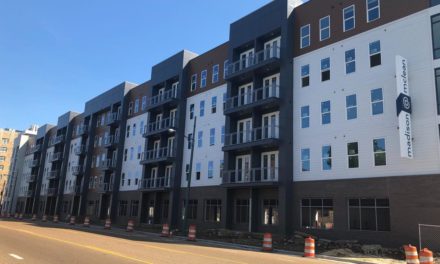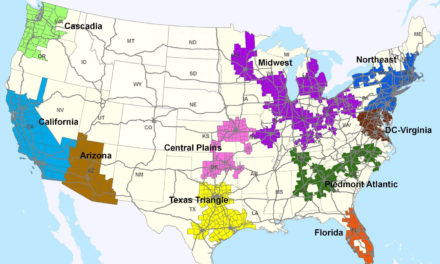Shelby County Engineer Mike Oakes had no trouble over bridging waters when it came to an opportunity to show how an inspired engineer can contribute directly to a better quality of life.
Here’s the set-up: Shelby County Government needed to build a new Kerrville-Rosemark Bridge over Big Creek. No one driving over the bridge would have thought anything of it if the new bridge had been a concrete monolith built with little regard for anything but our car-centric community. After all, that’s been a tradition in our region.
But Mr. Oakes had a better idea, and because of it, North Shelby County – an area whose residents justifiably often feel overlooked and underappreciated – has a bridge that contributes to an improved image and attitude.
Smarter Infrastucture
The bridge symbolizes the journey that the county’s chief engineer has taken in the past seven years. Freed from the traditional public sector way of thinking about infrastructure, he’s become a leading proponent of smart growth and context sensitive design in our community. This bridge in particular speaks to the latter, since it’s a radical departure from the run-of-the-mill ones designed and built in the past 25 years by local government.
We wrote a couple of days ago about his role in county government’s first “smart street” where a new section of Houston Levee built by Shelby County Government is more pedestrian and bike-friendly and just plain more attractive.
As for the Kerrville-Rosemark Bridge over Big Creek, the enhancements to make it more attractive and to make it sit more comfortably in its surroundings cost an additional $48,000; however, the bridge was built for $875,000, which was less than the contractor’s bid of $946,000, so in the end, it was a victory for the budget as well as for a better way of building bridges.
The public gets it. Even when it was thought that the bridge would cost more, they liked the idea, and now seeing the results, reviews have been overwhelmingly positive.
Looking Differently At Opportunities
When we asked Mr. Oakes what the “tipping point” was that led him to his new philosophy on these public infrastructure projects, he said: “First, I’m not sure I can say what the tipping point was. I have had a lifetime love for beautiful public works and facilities. When I was very small, I was fascinated by the souvenir book my grandmother had of the Chicago World’s Fair which was filled with beautiful public buildings, parks, etc. I loved our Cossitt Library and the Overton Park Zoo facilities like the Cat House.
“I was particularly impressed by my first visit to New York when I was 21 and saw the beautiful stone bridges on the Long Island Expressway. In my travels, I’ve wondered how San Francisco, San Diego, New York City, Chicago, etc., had managed to create so many great buildings, bridges, traffic circles, statues and parks that really set them apart as great, swaggering, successful cities.”
His simmering interest in these kinds of place-making investments flourished when Mayor A C Wharton took office, he said, citing the mayor’s commitment to context sensitive design (that led to a totally new approach to the highway through Shelby Farms) and to smart growth (that led to Sustainable Shelby and the new Unified Development Code).
“This opened doors that had been closed for decades in our community,” Mr. Oakes said. “We started looking for opportunities to apply (better design) about the time we were bidding the construction of the Houston Levee Road Bridge over the Wolf River. Shortly after award (of the contract), the contractor suggested some value engineering cost reductions which we could share. This additional funding source and the time needed to prepare and gain approval from state government on the changes presented the opportunity to try some architectural enhancements.
Good Design Is Everybody’s
“It turned out that we got the approval, built and enhanced the bridge and still saved money. At about that time, we also began to envision a steel bridge with dyed concrete and asphalt ‘pavers’ that could be repeated around the rural areas as our ‘signature bridge.’
“We are completing the new Mary’s Creek Bridge which will mimic the Wolf River Bridge about a mile away on Houston Levee Road. The design of the Macon Road Bridge is almost complete and will comprise two bridges with a more urban and historical look. The two bridges are more efficient and cost effective way of building this two-lane structure. It will also afford the motorists a view of both the bridge they are on and the adjacent one.“
Proving that good design is not just meant for everyone, Mr. Oakes is also considering a distinctive bridge for an industrial area. “While an industrial area offers less inducement in terms of context, we are considering some fairly inexpensive art deco enhancements on the new Fite Road Bridge,” he said. “We plan to have the parapet walls of this railroad crossing suggest the 1930’s Burlington ‘Zephyr’ train.”
When we brought Jeff Speck, former director of design for the National Endowment for the Arts, to Memphis last year, one of his “modest suggestions” for our city was that we not allow our engineers to be in charge of our quality of life. The design ethos at the Shelby County Engineer’s Office proves the exception to the rule, and we can only hope that it proves to be a virus that infects its peers in City Hall.
Best of all, Mr. Oakes understands that he is doing more than building bridges and roads. “We hope all of these, in their combination, may be the beginning of a new ‘swagger’ for our metro area.”




